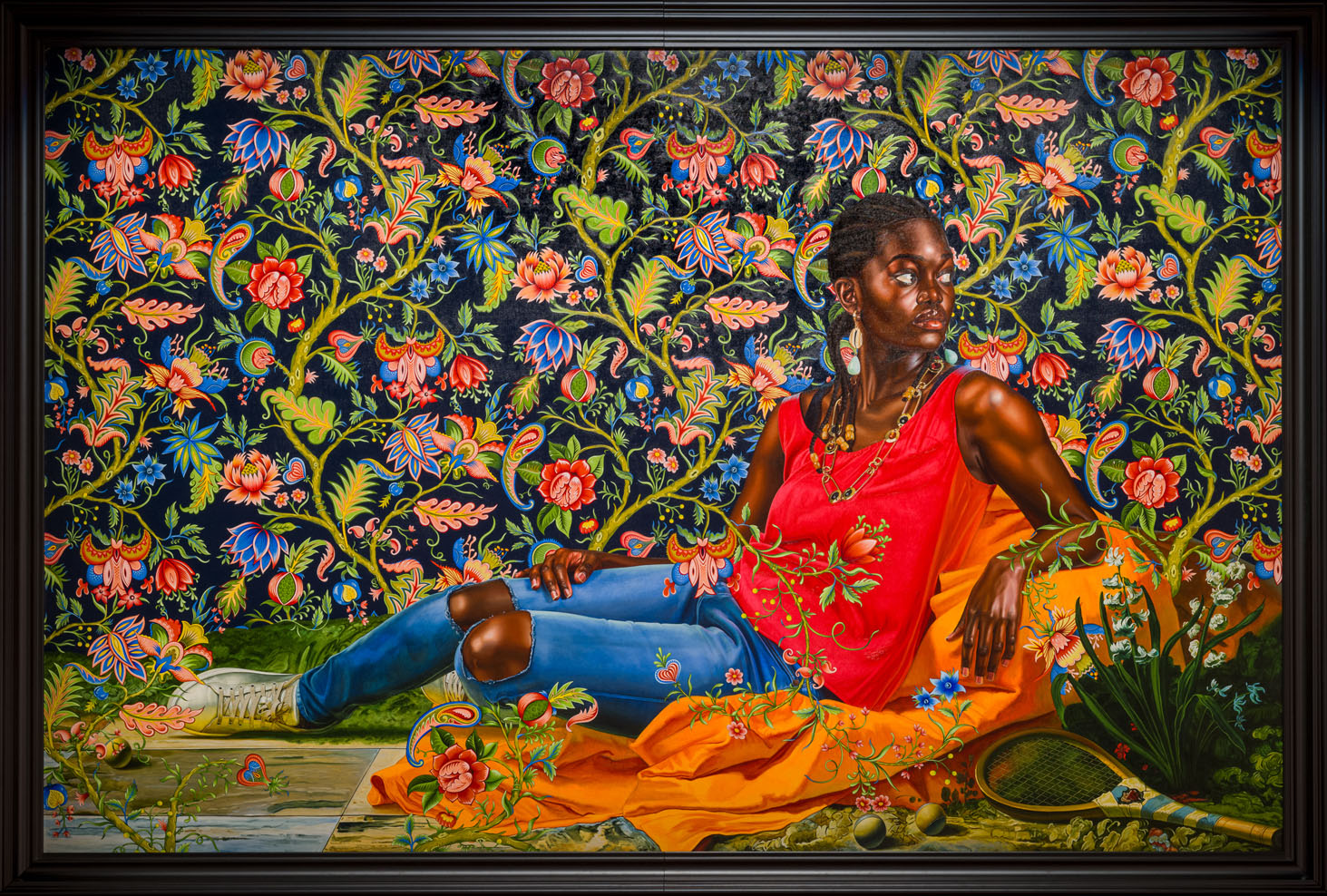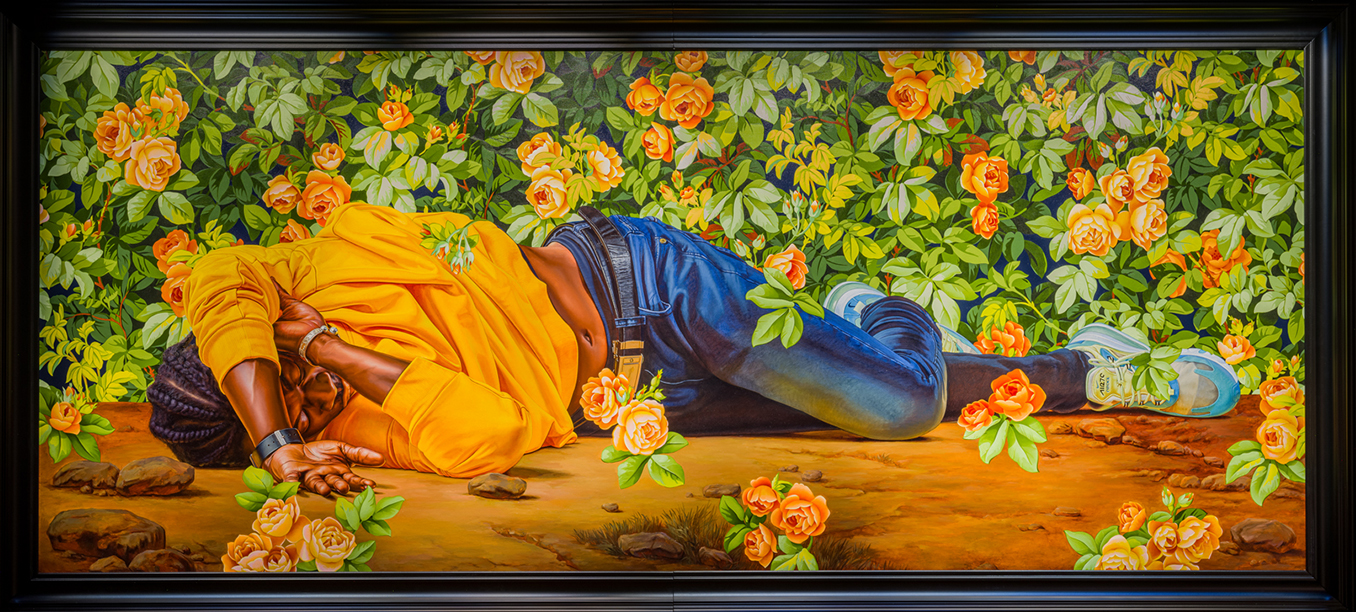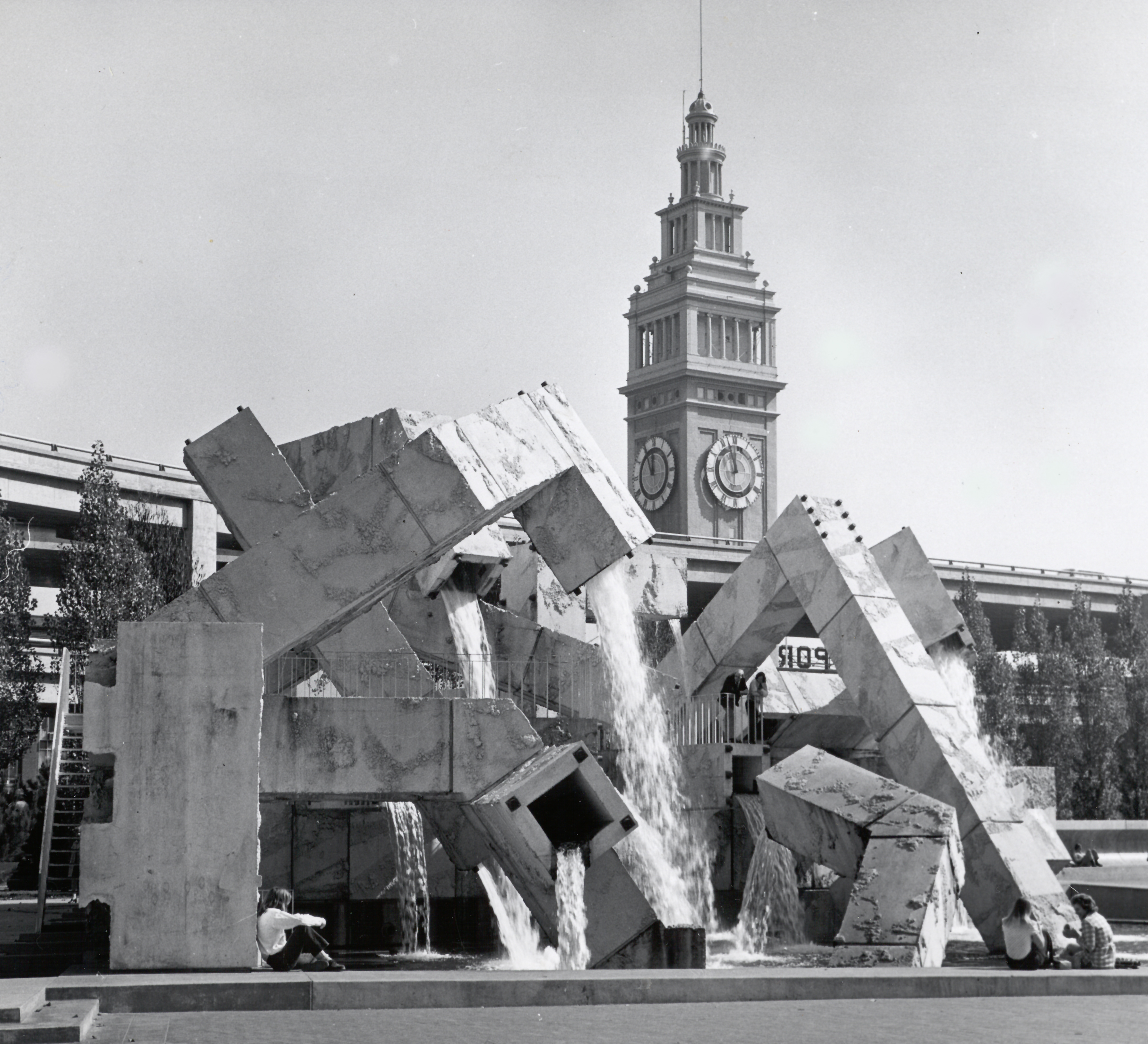
Dreams Caused by Death: Kehinde Wiley at the de Young
By Dr. Luke Williams
Isn’t there something wrong in a house — in a world — where all dreams, good or bad, must depend on the death of a man?” This question, asked by Joseph Asagai in Lorraine Hansberry’s Broadway hit "A Raisin in the Sun," has occupied my mind without fail for the last few weeks, months, and years. The quotation effectively summarizes the play, whose central plot revolves around the dreams of the Younger family as they decide how to spend a life insurance check following the death of the family patriarch. The $10,000 enriches the soil in which their proverbial dreams grow — on which their fantasies depend.
Black people. Fantasy. Riches. These are a few keywords evoked by Kehinde Wiley’s globally famous portraits. Other than his groundbreaking rendition of the 44th U.S. President, Barack Obama, he is perhaps best known for his large-scale renderings of Black people into positions of power and prestige in dialogue with neoclassical Western painting. Expanding on his 2008 "Down" series, Wiley takes his new exhibition titled "An Archaeology of Silence" in a different direction.
Opening at the de Young on March 18, "Kehinde Wiley: An Archaeology of Silence" brings with it a response to the pandemic, but more precisely, to the wake following George Floyd’s murder. Wiley’s new collection of work depicts Black people in various positions of death and dying. As Curator in Charge of Contemporary Art, Claudia Schmuckli interprets it, “In this body of work he foregrounds the rhetorical tools of sacrifice and death, as it appears in the Western tradition of the fallen and recumbent figure. This is a major body of work that marks an important turn for Wiley because it puts the focus squarely on the ‘pathetic,’ in the original use of the word. These figures are meant to evoke piety, especially through representations of martyrdom.” Thus, "An Archaeology of Silence" positions Black people as beautifully adorned dramatic heroes and saints. As a result, the exhibition reframes the seemingly never-ending murder of Black people through an honorific lens of spectacular representation.

"The Death of Hyacinth (Ndey Buri Mboup)." 2022, oil on canvas. ©️ 2022 Kehinde Wiley.
As paintings, these monumental elegies are breathtaking and beautiful. As spectacles, they hurt. While it is undeniable that Wiley’s paintings are emotionally stirring, in a greater social context, too often I feel that images of Black people both dead and dying become the political battleground over which American political values are fought. Using figures of Black death abstracts the real experience of a living breathing person into an object to be debated and dissected. It was then-Speaker Nancy Pelosi who thanked George Floyd for “giving his life” in service of a cultural tide rising up against white supremacy. I’m not aware of any choice he had in the matter. His life was taken, and taken up. It seemed to me like his life was taken not only by the Minneapolis Police Department, but also by everyone who wanted to turn his death into their own dream for the future. He was not born to be slaughtered as the sacrificial lamb to redeem the soul of America. He was not born as a lesson for white people. Not him. Not any of the hundreds more unnamed Black people who have since had their lives taken, whose likeness Wiley portrays in "An Archaeology of Silence." It prompts me to pose a question from Rizvana Bradley’s article “Picturing Catastrophe,” where she asks, “Are these images merely ciphers for those subjects who immediately recognize themselves as their audience?”

Kehinde Wiley, "Reclining Nude (Babacar Mané)", 2022 oil on canvas©️2022 Kehinde Wiley. Courtesy of the artist and Templon, Paris – Brussels – New York. Photo by Ugo Carmeni.
"An Archaeology of Silence" depicts elaborate fantasies of Black people in heroic positions occupied by famous martyrs. The exhibition is evocative and emotionally stirring, though I hope no more than the facts in reality. Appreciating the paintings won’t bring back the lives violently taken away. The hope that it might change hearts and minds is itself a fantasy. It is a dream of making Black people be seen as valuable and recuperating that value for others to consume. Even when our artwork is more precious to them than our lives.
The de Young will provide additional resources to respond to the range of reactions visitors might feel. The nearby Textiles Art Gallery will be utilized as a space to provide moments or rest and care. For those seeking to dive deeper and learn more, there will also be educational resources available.
I am most appreciative that a series of workshops will accompany the exhibition. In collaboration with Angela Hennessy and Marvin K. White, these programs will provide an opportunity for individual and collective grief. "The Quiet Hours" offers a complementary dialogue with the exhibition to open up space for the joy and sadness that might simultaneously emerge when reflecting on the immediate reality of state-sanctioned violence. What else could be done remains to be seen.
March 18 → October 15
"Kehinde Wiley: An Archaeology of Silence" de Young Museum - famsf.org
Admission is free on opening weekend March 18 - 19 thanks to the generosity of a donation by google.org. Please reserve your ticket at deyoungmuseum.org.
Main image: Kehinde Wiley, "Morpheus (Ndeye Fatou Mbaye)", 2022 oil on canvas
©️ 2022 Kehinde Wiley. Courtesy of the artist and Templon, Paris – Brussels – New York. Photo by Ugo Carmeni.



